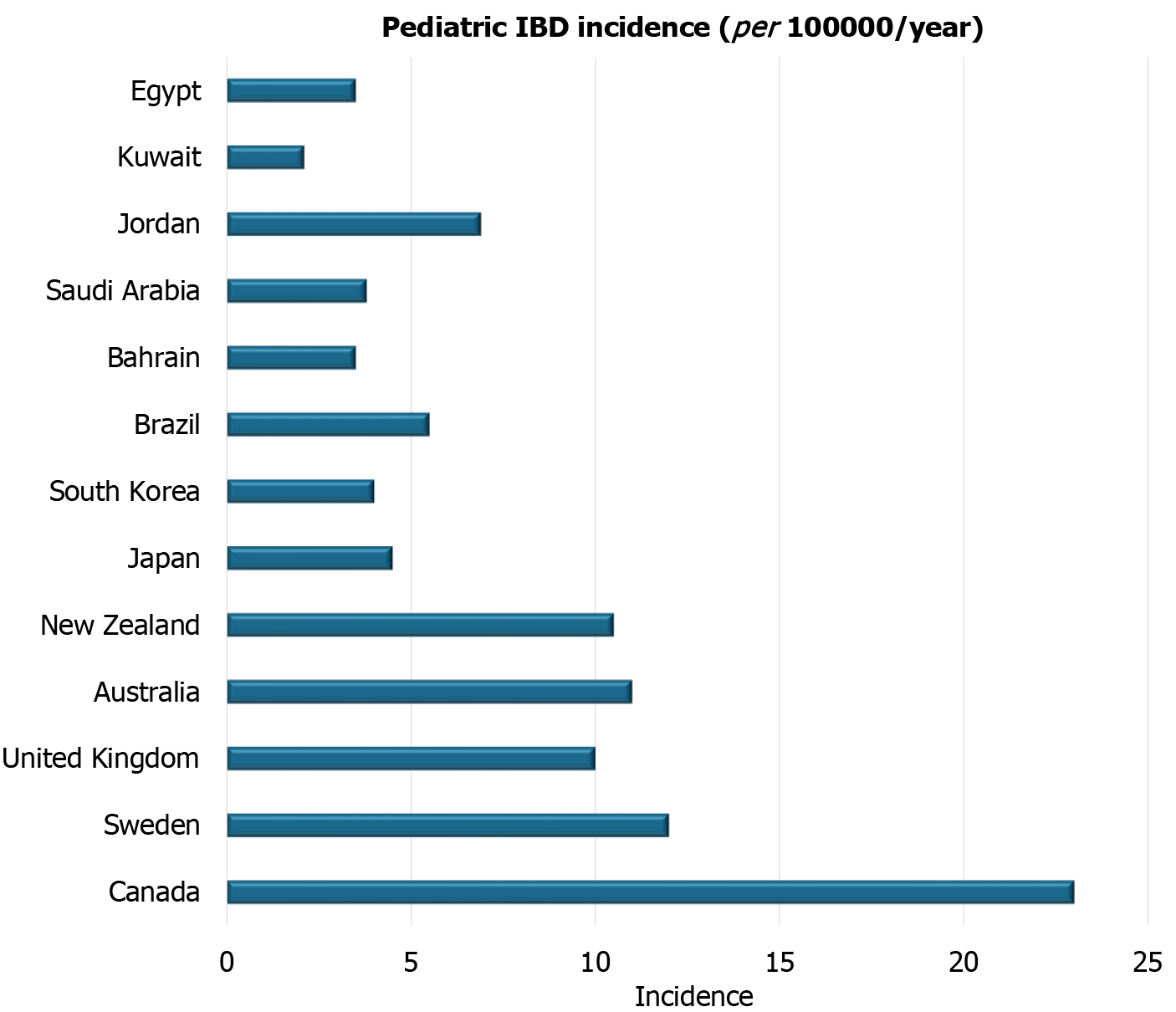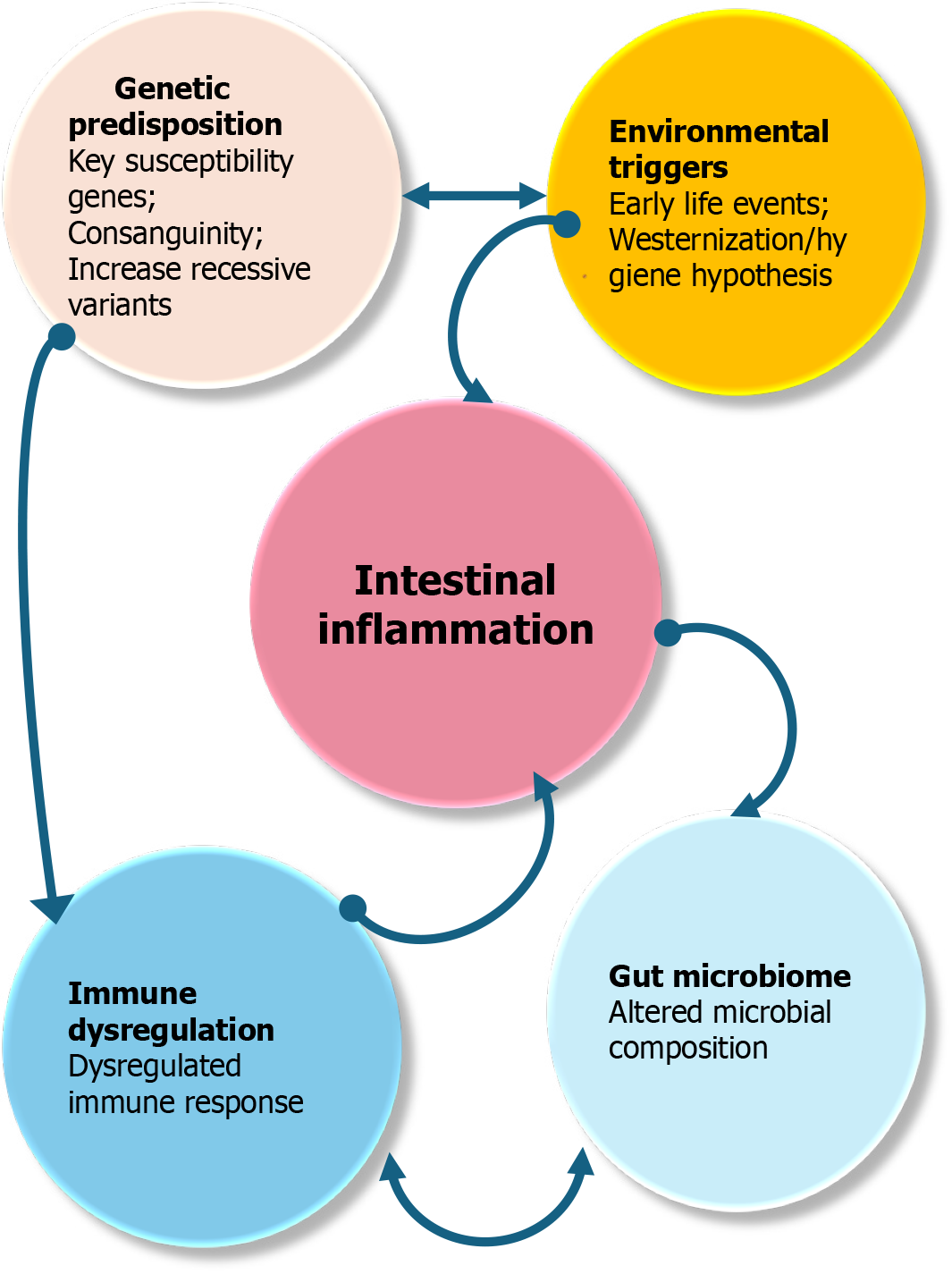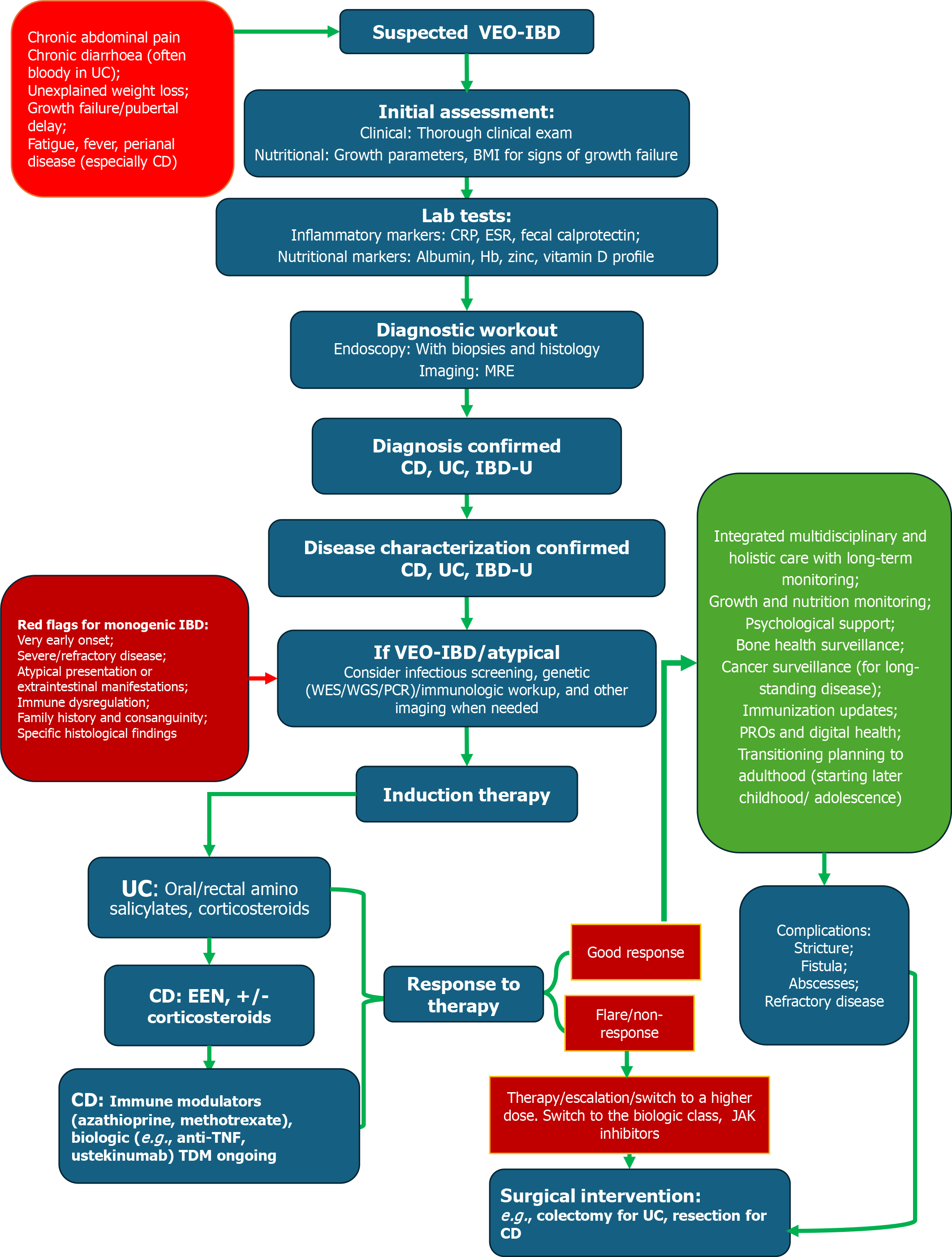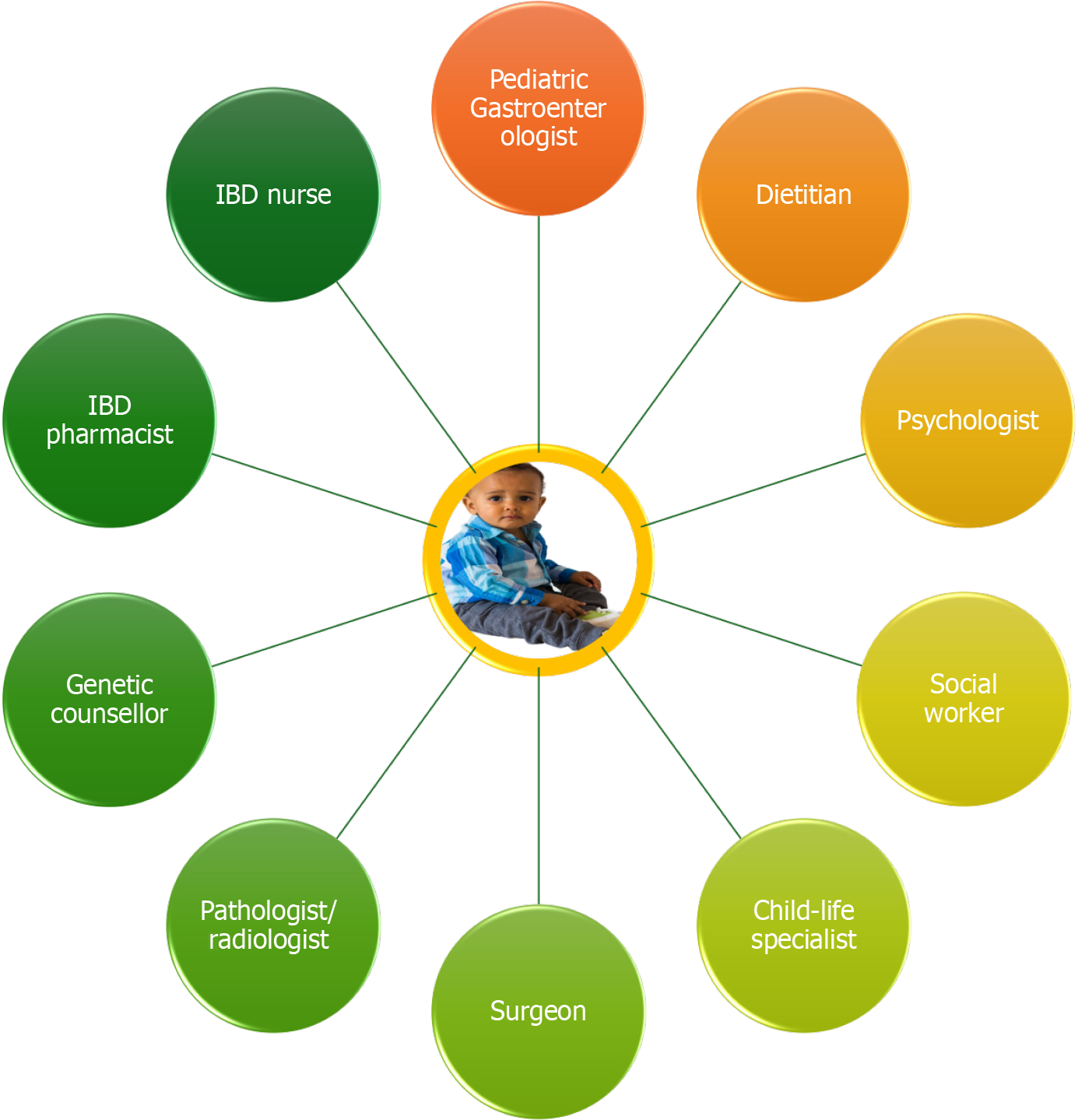Copyright
©The Author(s) 2025.
World J Gastroenterol. Sep 21, 2025; 31(35): 111934
Published online Sep 21, 2025. doi: 10.3748/wjg.v31.i35.111934
Published online Sep 21, 2025. doi: 10.3748/wjg.v31.i35.111934
Figure 1 Comparative pediatric inflammatory bowel disease incidence across global and Arabian Gulf regions (per 100000/year).
This bar chart illustrates the most recent reported incidence rates of pediatric inflammatory bowel disease (IBD), including Crohn’s disease and ulcerative colitis, from various global regions. Data are expressed as the number of new cases per 100000 children per year. Countries are arranged in descending order to highlight regional disparities, with the highest incidence observed in Canada and other Western nations. Arabian Gulf countries such as Bahrain and Saudi Arabia show lower, but steadily increasing rates, reflecting the global rise in pediatric IBD. IBD: Inflammatory bowel disease.
Figure 2 Conceptual diagram of pediatric inflammatory bowel disease pathogenesis.
This diagram illustrates the complex interplay of key contributing factors leading to intestinal inflammation in pediatric inflammatory bowel disease. It highlights the convergence of genetic predisposition (including the impact of consanguinity on recessive variants), immune dysregulation, the gut microbiome, and various environmental triggers (such as early life events and westernization/hygiene hypothesis). These elements interact dynamically to drive the onset and progression of pediatric inflammatory bowel disease.
Figure 3 Proposed very early-onset inflammatory bowel disease diagnostic and management pathway.
CD: Crohn’s disease; UC: Ulcerative colitis; VEO-IBD: Very early-onset inflammatory bowel disease; BMI: Body mass index; CRP: C-reactive protein; ESR: Erythrocyte sedimentation rate; Hb: Hemoglobin; EEN: Exclusive enteral nutrition; MRE: Magnetic resonance enterography; IBD-U: Inflammatory bowel disease-unclassified; WES: Whole exome sequencing; WGS: Whole genome sequencing; PCR: Polymerase chain reaction; PROs: Patient-reported outcomes; TNF: Tumor necrosis factor; TDM: Therapeutic drug monitoring; JAK: Janus kinase.
Figure 4 Multidisciplinary pediatric inflammatory bowel disease care model.
This diagram illustrates the patient- and family-centered approach to comprehensive care in pediatric inflammatory bowel disease. It depicts the core collaborative team of specialists and support services that work synergistically around the child and family to address the complex medical, nutritional, and psychosocial needs inherent in managing pediatric inflammatory bowel disease. IBD: Inflammatory bowel disease.
- Citation: Al-Beltagi M, Saeed NK, Mani PKC, Bediwy AS, Elbeltagi R. Inflammatory bowel disease in paediatrics: Navigating the old challenges and emerging frontiers. World J Gastroenterol 2025; 31(35): 111934
- URL: https://www.wjgnet.com/1007-9327/full/v31/i35/111934.htm
- DOI: https://dx.doi.org/10.3748/wjg.v31.i35.111934
















